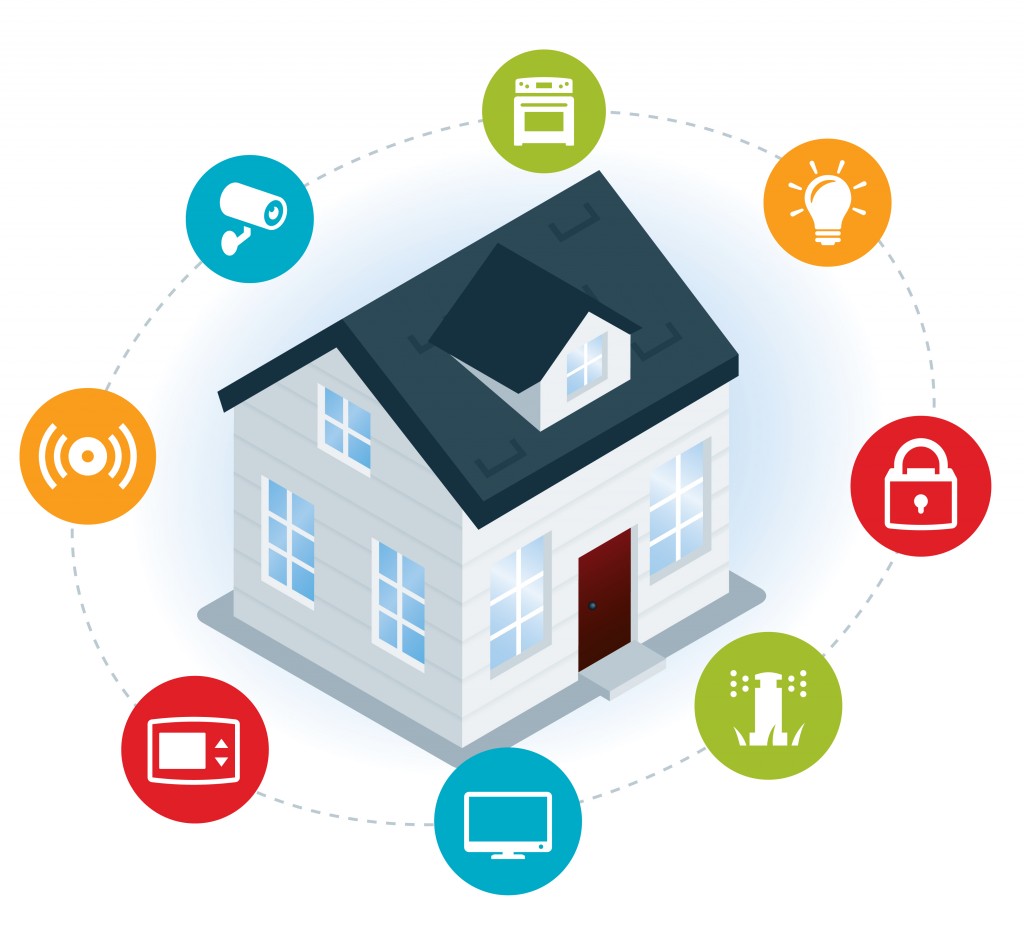
When buying a new home it is common to be overwhelmed with the unknown. The emotions at the forefront of making such a large purchase can sometimes lead to overlooking some key concerns. There are indicators that every buyer should be aware of while viewing potential properties. Always be aware of things like age of the roof, the viability of the furnace and duct work, when the water heater was last replaced and potential water and structural damage.
Buyers should always look at each home critically and be aware of any red flags prior to completing a home purchase. A red flag is defined as, “something that indicates or draws attention to a problem, danger, or irregularity.” It is important to be knowledgeable of any problems that are on the horizon when making such a life changing purchase.
Top Home Buying Red Flags –
#1: Potential Foundation/Structural Problems
One of the most costly repairs to a home is correcting foundation problems. The foundation of a home is arguably the most important part of a home. A home with a problematic foundation can cost a homeowner thousands of dollars to correct a problem.
When looking at homes, it’s important to be aware of the foundation. If the home has an unfinished basement it can be relatively easy to see if there is any cracking in the foundation. Minor cracking may only be a sign of settling in the home, however, large cracks can be a sign of structural problems with the foundation.
If a home doesn’t have a basement or has a finished basement that doesn’t allow for you to look at the foundation, another way to tell if a home is possibly experiencing structural problems is by looking at the door frames throughout the home. If the door frames seem not to be square or the doors seem to have difficulty closing, it’s possible there could be some problems with the home’s structure.
#2: Pest and/or Insect Problems
Depending on the area of the home, there are certain pest and insects that buyers need to be aware of. Many pests, especially wood destroying pests, can cause damage to a home that can cost thousands of dollars to rectify. The most common pests that should raise red flags include termites, powder post beetles, and carpenter ants.
Generally speaking, the cost of a pest inspection is fairly inexpensive. The cost of a pest inspection is absolutely worth it since a pest or insect problem can cost a significant amount of money to correct.
#3: Random Fresh Paint
One of the best ways to prepare a home on a budget for sale is freshly painting. Painting a room is a fairly inexpensive way to make a room feel clean and fresh. This is one of the biggest recommendations that Realtors will give to home owners prior to listing their home for sale.
When looking at homes, a room with only one wall or small portion of the ceiling that has been freshly painted should be a red flag. Why would a seller only paint a small part of the ceiling? Or only one wall? It’s possible the seller is trying to cover up a problem, which should be a cause for concern.
#4: Amateur Workmanship & Repairs
Amateur workmanship is one red flag that buyers need to be on the lookout for when viewing properties. It’s an important consideration to make when buying a flipped property. It’s common that flipped properties are completed by “flippers” who don’t have the qualifications to complete the projects properly, so it’s important to pay closer attention to amateur workmanship when viewing a flipped property.
Some of the most common amateur workmanship jobs to keep an eye out for when looking at homes include plumbing, carpentry, and electrical work. When looking at homes it is a good idea to keep an eye out for leaky faucets, toilets, missing trim work, and other potential DIY projects.
#5: Odors
It’s not uncommon that a homeowner becomes immune to a foul odor. Foul odors are one of the easiest ways that a seller can kill a home sale. When looking at homes, pleasant odors and foul odors can both be red flags.
It’s obvious that a foul odor is something that can scare away a potential buyer in less than a minute, but, why is a pleasant odor a possible red flag? If a home has a plug in air freshener in every outlet, a candle lit in every room, and air fresheners hanging in every room, it’s possible the homeowner is attempting to cover up a foul odor. While this isn’t always the case, it’s always something that buyers need to be aware of when looking at homes.
If there are windows opened in the middle of the winter when looking at a home, it again should raise a red flag. When looking at homes, if either of these scenarios were to arise, it’s important to find out more and ask the homeowner, or have your Realtor find out more.
#6: Poor Overall Neighborhood Condition
It’s important for buyers to remember that when they are purchasing a home, they are not only purchasing the specific lot it sits on and the property itself. When buying a home, they are also purchasing the neighborhood. A red flag that buyers need to look for when purchasing a home is a neighborhood that has an overall poor condition.
Buyers should look for things such as boarded up properties and a high number of vacant properties in the neighborhood. Choosing the right neighborhood to purchase a home in is not always easy, however, it is extremely important. Buying a home in a neighborhood that is decreasing or that has crime problems can be a costly mistake.
Most buyers don’t think about how the neighborhood will impact the resale value of the home, since they don’t own the property yet. Buying a home in a neighborhood that is decreasing can create problems in the future, not necessarily in the immediate future.
#7: Stains On Walls and/or Ceilings
If a seller has not attempted to cover up stains on a wall or ceiling with paint, this should still be viewed as a red flag when buying a home.
Are the stains a result from a leak in the roof? Are the stains a result from ice damming? Are the stains a result of a plumbing issue?
If there are stains on a wall or ceiling in the home, it’s important to find out what has caused these stains. It’s possible the stains are from a prior problem that has been corrected. Not investigating a stain on a wall or ceiling can cost a buyer thousands of dollars in repairs in the future.
#8: Electrical System Issues
Depending on the age of a home, it’s possible there are issues with the electrical systems. Inadequate or electrical issues need to be viewed as a red flag for a buyer. Many older homes still have older electrical panels with fuses and even some homes still have knob and tube wiring, which can cause significant problems.
It’s understood most home buyers are not professional electricians, however, simple things such as turning on light switches, checking for flickering lights, and checking outlets are all good ways to tell if the electrical seems to be working properly. Most home inspectors will inspect the electrical panel and test the outlets to ensure the electrical systems are not a safety concern.
#9: Poor Drainage/Grading
Water in a home is something that almost every home buyer will be terrified of. Most water problems in a home are directly related to poor drainage or grading.
Poor drainage is something that isn’t always easily detected. An obvious sign of poor drainage is pooling water. If the yard of a home has mini lakes, it likely has poor drainage, which can lead to water problems inside the home. Other signs of poor drainage can include overflowing gutters, migrating mulch in the flower beds, water stains on basement walls, and cracking in the foundation.
Proper grading can make a huge difference when it comes to water problems. It’s common sense that a negative grade resulting in standing water on the foundation can create water problems. It’s important that the overall grading is sloping away from the home’s foundation and that water is being run-off away from the home’s foundation. A relatively easy and inexpensive way to keep water away from a home’s foundation is by installing gutter downspout extensions.
#10: Mold
Similar to water problems, mold problems should raise red flags when buying a home. Mold can lead to major health problems, especially for young children. Mold problems are not always easily discovered, however, if a home you look at has mold problems, you need to consider whether the home is the right fit or not. There are many considerations that need to be taken into account to help determine whether buying a home with mold is the correct decision or not.
Mold remediation can be completed on a home, however, it can be costly. Like many of these red flags, most home inspectors can help discover mold problems in a home. The most common areas for mold in a home are basements and attics. There are companies that can perform mold tests to determine whether for certain a home has mold or not.
Final Thoughts
I know how hard it is to walk away from a home. In the end, however, numerous clients have told me it was worth the wait. If you’re looking for an agent who will be so honest as to discourage you from buying if it’s not right, I’d love to connect. Give me an email or call anytime.

 When listing your home, there are a lot of things to think about. How you stage your space should definitely be at the top of that list. While you may not have the means to bring in a pro stager, you can put your best foot forward by removing the following from your space.
When listing your home, there are a lot of things to think about. How you stage your space should definitely be at the top of that list. While you may not have the means to bring in a pro stager, you can put your best foot forward by removing the following from your space.